
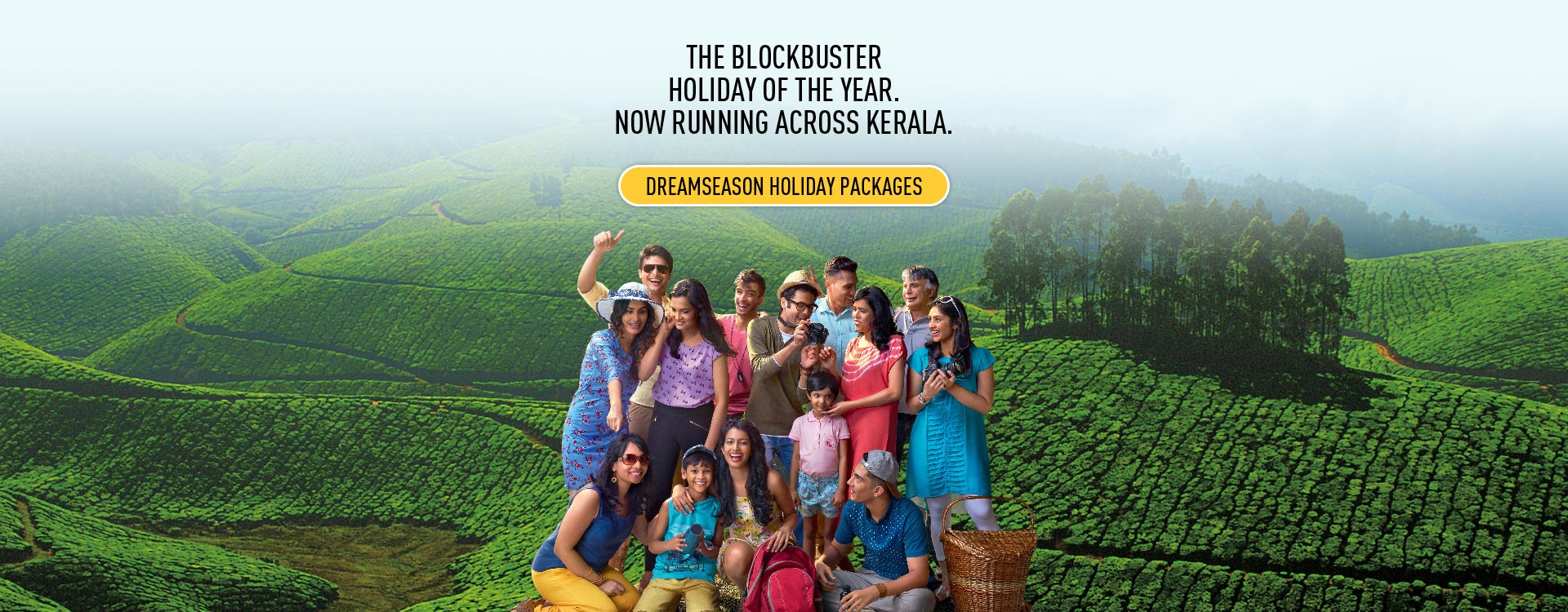
Kerala at a Glance
With the Arabian Sea in the west, the Western Ghats towering 500-2700 m in the east and networked by 44 rivers, Kerala enjoys unique geographical features that have made it one of the most sought after tourist destinations in Asia. An equable climate. A long shoreline with serene beaches. Tranquil stretches of emerald backwaters. Lush hill stations and exotic wildlife. Waterfalls. Sprawling plantations and paddy fields. Ayurvedic health holidays. Enchanting art forms. Magical festivals. Historic and cultural monuments. An exotic cuisine... All of which offer you a unique experience. And what's more, each of these charming destinations is only a two hour drive from the other - a singular advantage no other destination offers.
Kerala, India's most advanced society: With hundred percent literacy. World-class health care systems. India's lowest infant mortality and highest life expectancy rates. The highest physical quality of life in India. Peaceful and pristine, Kerala is India's cleanest state.
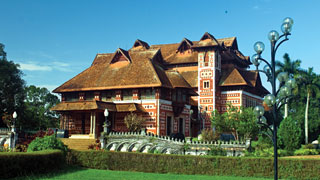
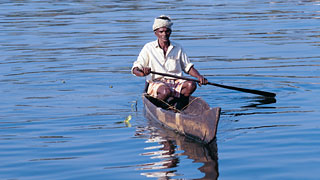
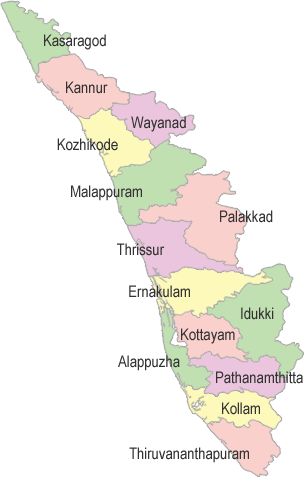
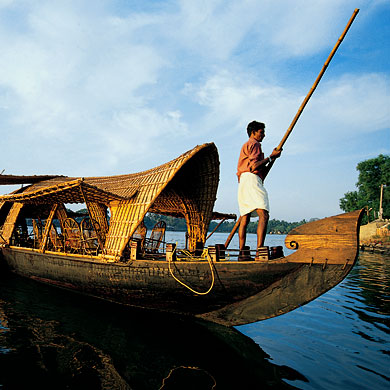
DTPC House boat Pre-paid Counter
For booking houseboats, travelers can make use of the House Boat Pre-paid Counter 'Trusted Service, Trusted Rates' managed by the District Tourism Promotion Council (DTPC).
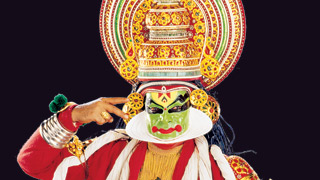
Kerala, India's most advanced society: With hundred percent literacy. World-class health care systems. India's lowest infant mortality and highest life expectancy rates. The highest physical quality of life in India. Peaceful and pristine, Kerala is India's cleanest state.
Major Cities
Thiruvananthapuram
Kollam
Kochi
Thrissur
Kozhikode
Kollam
Kochi
Thrissur
Kozhikode



Location
Kerala is situated on the southwestern coast of India, a country in South Asia. This tropical paradise enjoys a unique topography with Arabian sea, a part of the Indian Ocean on the west and the Western Ghats on the eas

Houseboat
Cruise through Kerala in a houseboat!
Have you ever gone cruising in a houseboat on the backwaters of Kerala? If you haven't, make sure you do. This one is really a wonderful and unforgettable experience!
Present day houseboats are huge, slow moving exotic barges used for leisure trips, and are in fact reworked version of kettuvallams of olden times. The original kettuvallams were used to carry tons of rice and spices. A standard kettuvallam can hold up to 30 tons from Kuttanad to the Kochi port.
Present day houseboats are huge, slow moving exotic barges used for leisure trips, and are in fact reworked version of kettuvallams of olden times. The original kettuvallams were used to carry tons of rice and spices. A standard kettuvallam can hold up to 30 tons from Kuttanad to the Kochi port.
The kettuvallam is held together with coir knots. Not even a single nail is used during the construction of the boat.. The boat is made of planks of jack-wood joined together with coir. This is then coated with a caustic black resin made from boiled cashew kernels. With careful maintenance, a kettuvallam can last for generations.
A portion of the kettuvallam was covered with bamboo and coir to serve as a restroom and kitchen for the crew. Meals would be cooked onboard and supplemented with freshly cooked fish from the backwaters.
When the modern trucks replaced this system of transport, some one found a new way that would keep these boats, almost all of which were more than 100 years old, in the market. By constructing special rooms to accommodate travelers, these boats cruised forward from near-extinction to enjoy their present great popularity.
Now these are a familiar sight on the backwaters and in Alappuzha alone, there are as many as 500 houseboats.
While converting kettuvallams into houseboats, care is taken to use only natural products. Bamboo mats, sticks and wood of the areca nut tree are used for roofing, coir mats and wooden planks for the flooring and wood of coconut trees and coir for beds. For lighting though, solar panels are used.
Today, the houseboats have all the creature comforts of a good hotel including furnished bedrooms, modern toilets, cozy living rooms, a kitchen and even a balcony for angling. Parts of the curved roof of wood or plaited palm open out to provide shade and allow uninterrupted views. While most boats are poled by local oarsmen, some are powered by a 40 HP engine. Boat-trains - formed by joining two or more houseboats together are also used by large groups of sightseers.
What is truly magical about a houseboat ride is the breathtaking view of the untouched and otherwise inaccessible rural Kerala that it offers, while you float! Now, wouldn't that be something?
What is truly magical about a houseboat ride is the breathtaking view of the untouched and otherwise inaccessible rural Kerala that it offers, while you float! Now, wouldn't that be something?
DTPC House boat Pre-paid Counter
For booking houseboats, travelers can make use of the House Boat Pre-paid Counter 'Trusted Service, Trusted Rates' managed by the District Tourism Promotion Council (DTPC).

Kathakali
Kerala owes its transnational fame to this nearly 300 years old classical dance form which combines facets of ballet, opera, masque and the pantomime. It is said to have evolved from other performing arts like Kutiyattam, Krishnanattam and Kalaripayattu. Kathakali explicates ideas and stories from the Indian epics and Puranas.
Presented in the temple precincts after dusk falls, Kathakali is heralded by the Kelikottu or the beating of drums and to the accompaniment of the Chengila (gong). The riches of a happy blending of colour, expressions, music, drama and dance are unparallelled in any other art form.
Kathakali Make-up
Costume is elaborate with the face painted up. Great importance is laid on the Vesham or make-up which are of five types - Pacha, Kathi, Thadi, Kari and Minukku.
The pomp and magnificence of Kathakali is partly due to its décor, part of which is the kireetamor huge headgear and the kanchukam the over sized jackets, and a long skirt worn over a thick padding of cushions. The identity of the actor is completely mutilated to create a super human being of larger-than-life proportion.
Pacha (Green)
Pacha Vehsam or the green make-up portray noble protagonists.
Kathi (Knife)
Kathi Vesham portrays villainous characters.
Thadi (Beard)
There are three types of bearded or Thadi Veshams.
Kari Vesham is used for she-demons.
Minukku (Prettying Up)
The "Minukku Vesham" is used for female characters and sages.
Mudra
Mudra is a stylized sign language used to depict an idea, a situation or a state of being. A Kathakali actor enacts his ideas through mudras. For this the actor follows a systematic sign language based on Hastalakshana Deepika, a treatise on the language of hand gestures.
Kathakali Music
Kathakali orchestra is formed of two varieties of drums - the maddalam and chenda; thechengila which is a bell metal gong and the ilathalam or cymbals.
Kathakali Training
Students of Kathakali have to undergo rigorous training replete with oil massages and separate exercises for eyes, lips, cheeks, mouth and neck. Abhinaya or expression is of prime importance as is nritya or dance and geetham or singing.
Together with highly evocative facial expressions, the mudras and the music both vocal and instrumental, Kathakali unfolds stories from a bygone era in a lofty style reminiscent of the Greek plays. Kerala Kalamandalam is the prominent institution imparting Kathakali training in the traditional way.
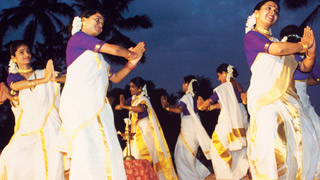
Presented in the temple precincts after dusk falls, Kathakali is heralded by the Kelikottu or the beating of drums and to the accompaniment of the Chengila (gong). The riches of a happy blending of colour, expressions, music, drama and dance are unparallelled in any other art form.
Kathakali Make-up
Costume is elaborate with the face painted up. Great importance is laid on the Vesham or make-up which are of five types - Pacha, Kathi, Thadi, Kari and Minukku.
The pomp and magnificence of Kathakali is partly due to its décor, part of which is the kireetamor huge headgear and the kanchukam the over sized jackets, and a long skirt worn over a thick padding of cushions. The identity of the actor is completely mutilated to create a super human being of larger-than-life proportion.
Pacha (Green)
Pacha Vehsam or the green make-up portray noble protagonists.
Kathi (Knife)
Kathi Vesham portrays villainous characters.
Thadi (Beard)
There are three types of bearded or Thadi Veshams.
- Vella Thadi or White beard for superhuman monkeys like Hanuman.
- Chuvanna Thadi or Red beard meant for evil characters.
- Karutha Thadi or Black beard for the hunter.
Kari Vesham is used for she-demons.
Minukku (Prettying Up)
The "Minukku Vesham" is used for female characters and sages.
Mudra
Mudra is a stylized sign language used to depict an idea, a situation or a state of being. A Kathakali actor enacts his ideas through mudras. For this the actor follows a systematic sign language based on Hastalakshana Deepika, a treatise on the language of hand gestures.
Kathakali Music
Kathakali orchestra is formed of two varieties of drums - the maddalam and chenda; thechengila which is a bell metal gong and the ilathalam or cymbals.
Kathakali Training
Students of Kathakali have to undergo rigorous training replete with oil massages and separate exercises for eyes, lips, cheeks, mouth and neck. Abhinaya or expression is of prime importance as is nritya or dance and geetham or singing.
Together with highly evocative facial expressions, the mudras and the music both vocal and instrumental, Kathakali unfolds stories from a bygone era in a lofty style reminiscent of the Greek plays. Kerala Kalamandalam is the prominent institution imparting Kathakali training in the traditional way.

Thiruvathirakali
Thiruvathirakali is a dance performed by women, in order to attain everlasting marital bliss, onThiruvathira day in the Malayalam month of Dhanu (December- January). The dance is a celebration of marital fidelity and the female energy, for this is what brought Kamadeva (the god of love) back to life after he was reduced to ashes by the ire of Lord Siva.
The sinuous movements executed by a group of dancers around a nilavilakku, embody 'lasya' or the amorous charm and grace of the feminine. The dance follows a circular, pirouetting pattern accompanied by clapping of the hands and singing. Today, Thiruvathirakali has become a popular dance form for all seasons
The sinuous movements executed by a group of dancers around a nilavilakku, embody 'lasya' or the amorous charm and grace of the feminine. The dance follows a circular, pirouetting pattern accompanied by clapping of the hands and singing. Today, Thiruvathirakali has become a popular dance form for all seasons
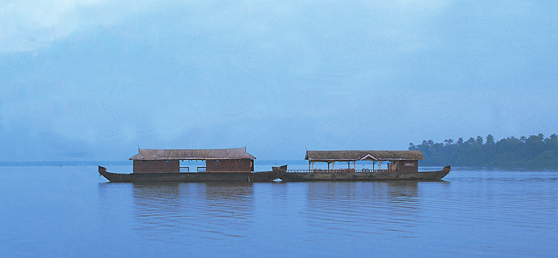

No comments:
Post a Comment